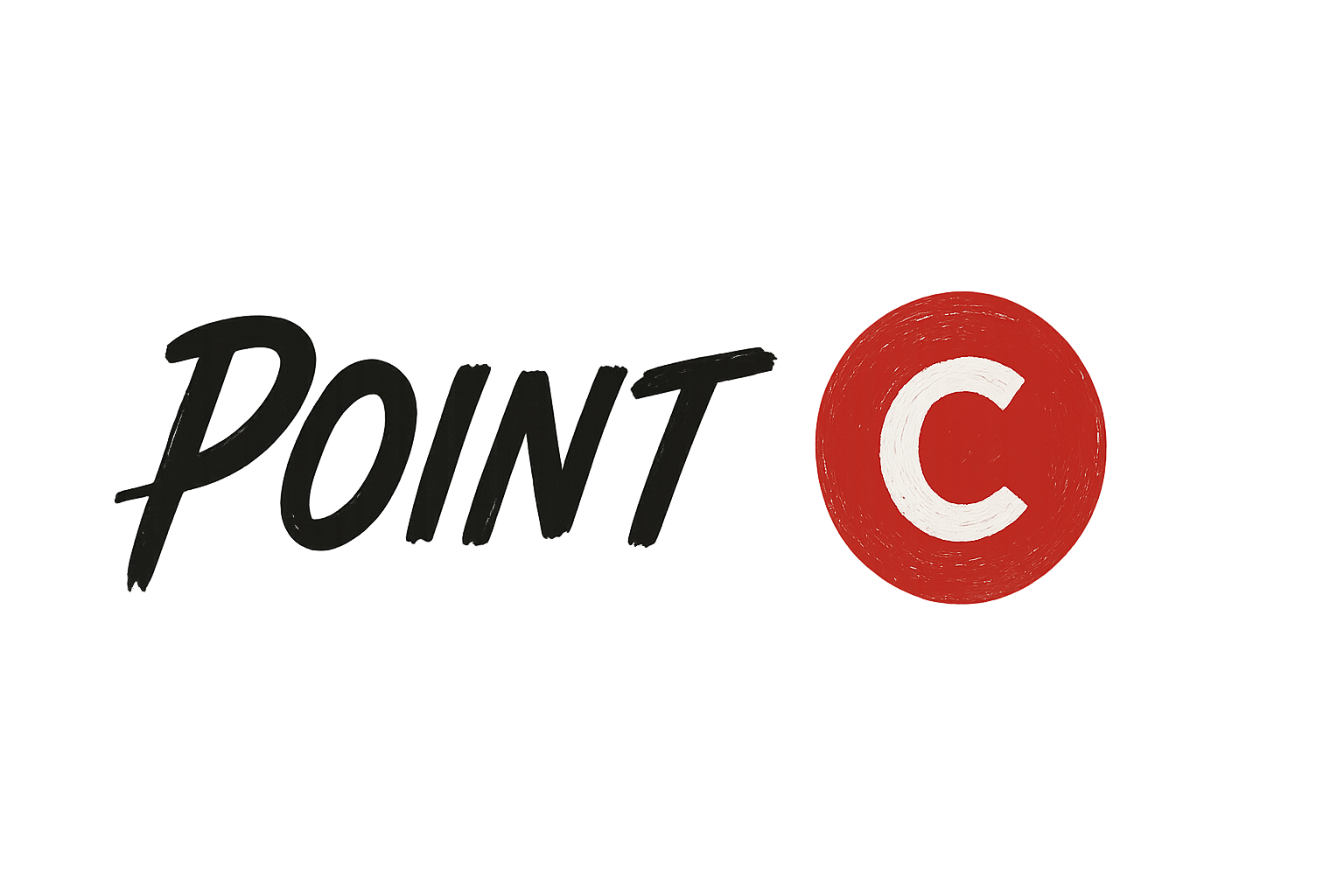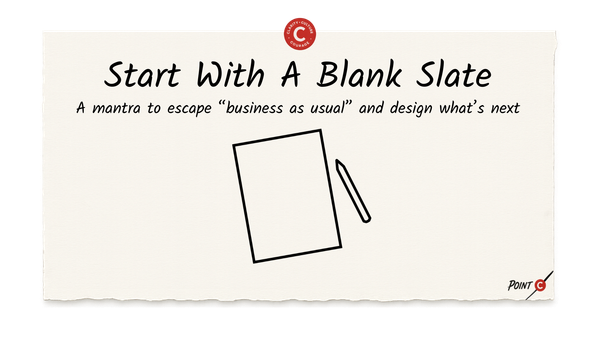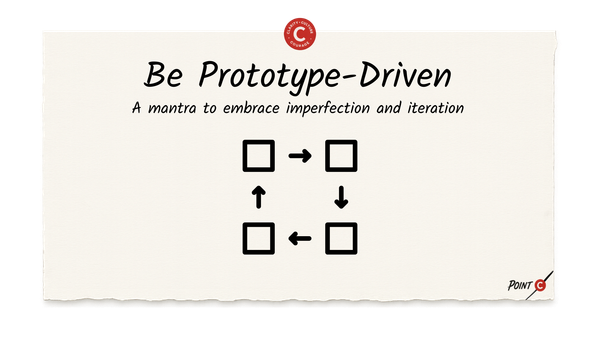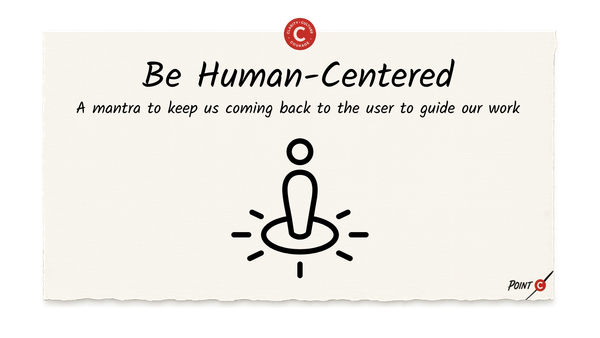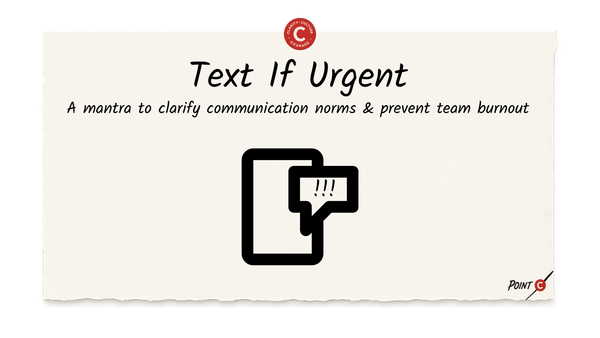One Consultative Decision Maker Per Lane
A mantra to empower your team, clarify roles, and unlock momentum
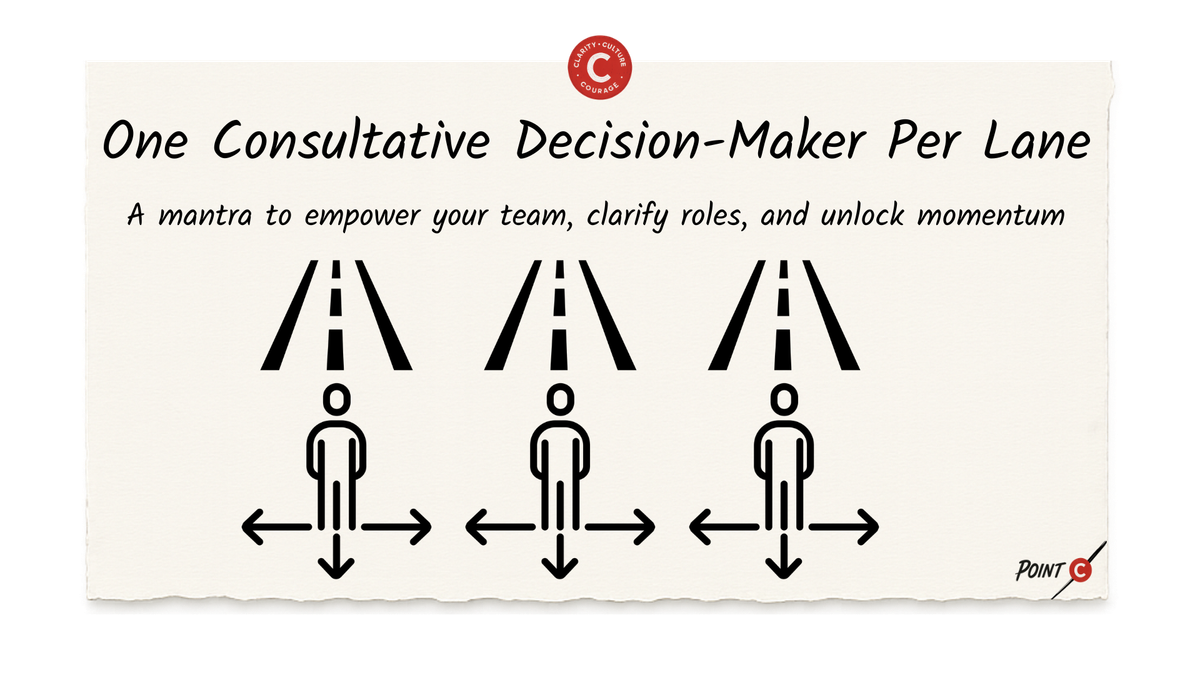
Over the last few weeks in The Idea Bucket, we explored one of my favorite leadership mantras: Feedback is a gift — not a demand
We introduced two rituals that help teams embed that mindset into their culture. But feedback alone isn’t enough. For innovation to thrive, your team also needs clarity on this:
Who gets to decide?
Because without a clear decision-making norm, all that well-intended feedback becomes paralyzing.
That’s why I pair my feedback mantra with a second one—a mantra that ensures teams can move forward even amid ambiguity and disagreement:
One Consultative Decision-Maker Per Lane
Let’s break down what that means—and why it matters.
The Importance of Explicit Norms
When it comes to leading high-performing innovation teams, the first step is being intentional and explicit about the rules for how the team will operate.
Most teams skip this. They dive straight into the task at hand, assuming everyone shares the same unspoken rules of engagement. This is a grave mistake — and a primary cause of dysfunction in innovation teams.
To achieve high performance, leaders must create the time and space for the team to craft explicit norms.
The most important explicit norm is how decisions are made. You'd be surprised how many teams don't actually clarify decision-making rules. And without explicit norms, people fall back on their own implicit assumptions:
- Some expect consensus.
- Some assume the boss decides.
- Some believe in voting.
- Some expect unanimous buy-in.
None of these models are inherently wrong. The problem is when everyone brings a different mental model — and no one says it out loud.
That’s how conflict happens.
That’s how people feel disempowered.
That’s how teams slow to a crawl.
There isn't one right explicit norm for making decisions. But in my leadership playbook, I’ve found one default norm that consistently works for innovation teams: One Consultative Decision-Maker Per Lane
What It Means
As an innovation leader, I aim to build a subculture that:
- Encourages the free flow of information, while
- Empowering people to act and iterate quickly on what they learn
I want my team to feel ownership and agency — to have a bias toward action — without losing alignment.
That’s why I default to a consultative decision-making model with clear lanes of autonomy.
Let’s break it down:
1) Clear Lanes of Autonomy
Ensure every team member has a clearly defined responsibility — a “lane.”
If you’ve built your team well, you’ve surrounded yourself with people who are better than you at their craft. Your job is to trust them to run their lane, and ensure that all lanes are moving in the same direction.
Each lane owner should be empowered to:
- Make decisions in their domain
- Solve problems and pursue opportunities
- Define and own their strategy
They shouldn’t be waiting for permission or consensus to act.
2) Consultative Decision-Making
But autonomy doesn’t mean isolation.
Lane owners must actively consult with you and their peers to:
- Align their lane with the overall direction
- Uncover unknown unknowns that affect others
Here's what consultative decision-making looks like in practice:
“I know I own this lane. I’m going to share what I’m thinking, listen hard, and consider the feedback — but ultimately, I’m going to make the decision.”
Because feedback is a gift — not a demand.
Once you’ve listened, you still own the decision.
As the team leader, you own the overall strategy — and your job is to:
- Set the vision
- Ensure alignment across lanes
- Make the final call when decisions span multiple domains
For everything else: let the lane owners lead.
Your Job: Be the Chief Clarity Officer
The mantra One Consultative Decision-Maker Per Lane only works if you, as the leader, model and reinforce it. You must step into the role of Chief Clarity Officer. Your job isn’t to make all the decisions — it’s to build the system that enables others to make great ones.
Here’s how:
1. Clarify the Lanes
Ensure every team member knows:
- What they own
- Where the edges of their lane are
- What decisions fall within their authority
Without this clarity, teams either freeze or overstep.
2. Reinforce Consultation
Model what consultative decision-making looks like in your executive team meetings:
- Hold design reviews for everyone's strategies, including your own
- Listen hard. Say, “Thank you — I’ll take this into consideration as I navigate these difficult trade-offs”
- Give feedback freely, but reinforce that they own the decision in their lane
- Don’t step in unless it crosses lanes
Consultation is not consensus. Name that often.
3. Align the Lanes
You hold the full map. Your job is to:
- Spot overlaps, gaps, and unclear ownership
- Resolve tensions early
- Connect day-to-day decisions back to strategic direction
When you’re clear on vision and ownership — and when your team knows feedback isn’t a veto — you unlock speed without chaos.
Why This Mantra Matters
One Consultative Decision-Maker Per Lane reinforces key innovation values in just seven words. It sets clear expectations for:
- Defined roles and ownership
- Active listening and collaboration
- Decisive action
- Empowered teams
- Faster pace and fewer bottlenecks
That’s the power of a mantra: it reinforces critical norms and sets high standards for behavior.
How These Mantras Come Together
One Consultative Decision-Maker Per Lane and Feedback is a Gift — Not a Demand are the peanut butter and jelly of innovation culture.
Together, they create:
- An empowered team that knows its role
- A culture of early, open communication
- Faster iteration — without fear of losing control
When people know they can share work-in-progress without giving up ownership, feedback becomes fuel — not friction.
Your Challenge This Week
Interrogate the decision-making norms on your team:
- Forward this newsletter to your team to provide context.
- Gather your team together. Ask each person to write down their honest answers to these questions:
- How are decisions made today?
- Who owns which lanes?
- Do you feel empowered to make decisions in your lane?
- Can you share imperfect strategies with the group without losing control?
- Have each person share while the rest of the team listens.
- Summarize what you’ve heard. Then commit to returning with a clearer set of decision-making norms.
You might be surprised what surfaces when your team makes explicit what was implicit.
Next Week
We’ve now explored two essential mantras for building a culture of innovation:
- Feedback is a Gift — Not a Demand
- One Consultative Decision-Maker Per Lane
Next week, we’ll add a third — one that helps teams navigate the natural tension between exploration and execution:
Always Separate Flaring and Focusing
It’s a critical rule for avoiding the conflict that happens when teams try to brainstorm and make decisions at the same time.
About This Newsletter
The Idea Bucket is a weekly newsletter and archive featuring one visual framework, supporting one act of leadership, that brings you one step closer to building a culture of innovation.
It’s written by Corey Ford — executive coach, strategic advisor, and founder of Point C, where he helps founders, CEOs, and executives clarify their visions, lead cultures of innovation, and navigate their next leadership chapters.
Want to explore how strategy and storytelling come together? Check out The Venture Story — my first mini-book and leadership storytelling framework.
Want to give your teams an immersive learning experience on these concepts? Bring me in to run The Point C Training Camp at our company.
Want 1:1 executive coaching on this framework or others? Book your first coaching session. It's on me.
